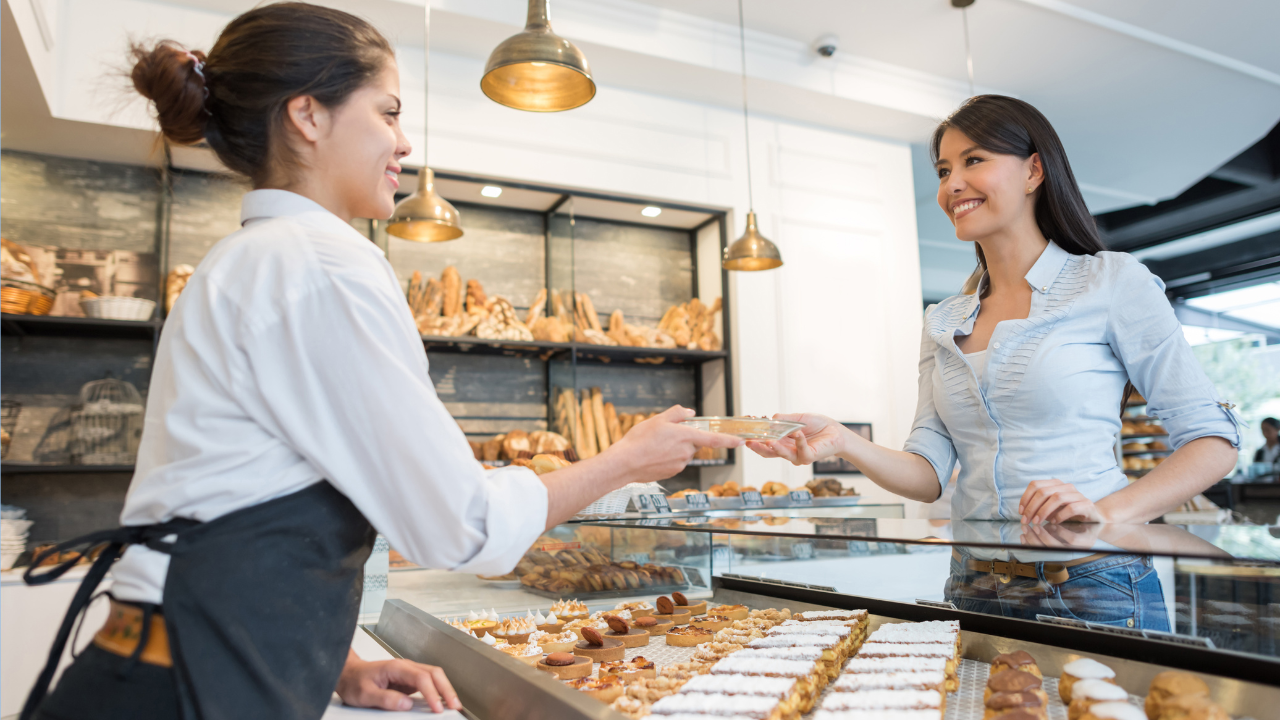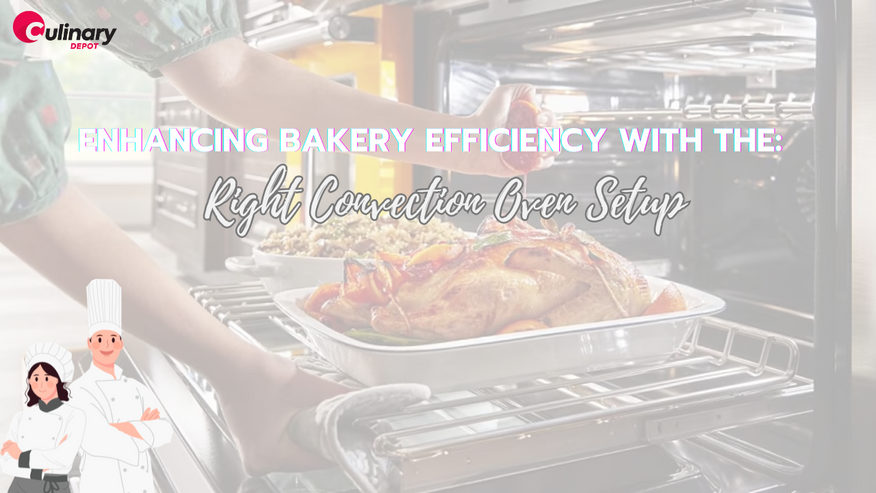May 23rd 2024 - Team Member
Enhancing Bakery Efficiency with the Right Convection Oven Setup
Bakery businesses thrive on efficiency. In the fast-paced world of commercial bakeries, finding ways to streamline operations and maximize productivity is crucial for success. One area that can significantly impact efficiency is the setup of the convection oven.
A well-thought-out convection oven setup can significantly enhance bakery operations, leading to improved productivity, consistent product quality, and ultimately, higher customer satisfaction.
In this article, we'll explore how the right convection oven setup can help bakeries streamline their processes and achieve greater efficiency.
Understanding Convection Ovens
What is a Convection Oven?

A convection oven is a type of oven that uses a fan to circulate hot air around the food. This constant circulation of hot air results in more even cooking and faster cooking times compared to conventional ovens. Convection ovens are particularly popular in bakeries due to their ability to bake goods evenly and efficiently.
With the right convection oven setup, bakeries can experience a range of benefits that can help them improve their overall efficiency.
Vulcan VC4GD-NG 40" W Stainless Steel Natural Gas Single-Deck Convection Oven - 50,000 BTU
Benefits of Convection Ovens for Bakeries

- Even Baking: The circulating air in convection ovens ensures that heat is distributed evenly around the food, resulting in uniform baking and consistent product quality.
- Faster Cooking Times: The efficient heating transfer in convection ovens allows for faster cooking times, which is crucial in a busy bakery environment.
- Energy Efficiency:Convection ovens are generally more energy-efficient than conventional ovens, helping bakeries save on operating costs.
- Versatility:Convection ovens can be used for a variety of baking tasks, from baking bread and pastries to roasting meats and vegetables.
Enhancing Bakery Efficiency with the Right Convection Oven Setup

Proper Placement of Convection Ovens
- Optimal Spacing: Ensure that convection ovens are spaced apart adequately to allow for proper air circulation and heat dissipation.
- Clear Pathways: It is important to have clear pathways around the convection ovens to facilitate easy movement of bakery staff and equipment. This not only ensures safety but also allows for efficient workflow and prevents any potential accidents or interruptions.
- Proximity to Preparation Stations: Place the convection ovens in close proximity to the preparation stations such as dough mixing areas, ingredient stations, and baking racks. This setup allows for seamless transition from preparing the dough or batter to baking it in the convection oven, minimizing any delays or unnecessary movement.
- Consider Workflow: Take into account the flow of bakery operations when positioning the convection ovens. For example, if there are separate stations for preparing different types of baked goods, it may be beneficial to dedicate specific convection ovens for each station to avoid cross-contamination and ensure optimal efficiency.
Using Multiple Convection Ovens
In larger bakeries or those with high production demands, using multiple convection ovens can further enhance efficiency. Here are some tips for using multiple convection ovens effectively:
- Zoning: Divide the bakery space into different zones, each with its own set of convection ovens. This allows for simultaneous baking of different products without affecting each other
- Accessibility: Place convection ovens in a location that allows for easy access by bakery staff, minimizing the time spent moving trays in and out of the oven.
Utilizing Different Types of Convection Ovens

Now, let's dive into the different types of convection ovens you can utilize.
- Standard Convection Ovens: Ideal for baking a variety of items, including bread, pastries, and cookies.
- Deck Ovens: Great for baking artisanal bread and pizzas, offering a traditional baking experience with modern efficiency.
- Rotating Rack Ovens: Perfect for high-volume baking, allowing for large quantities of baked goods to be baked evenly and efficiently.
Duke E102-G-LP 38"W Liquid Propane Double Deck Convection Oven - 115 Volts 3.5 Amps
Implementing Efficient Baking Practices
- Batch Baking: Utilize the full capacity of the convection oven by baking multiple trays of goods simultaneously, reducing overall baking time.
- Proper Loading: Ensure that trays are loaded into the oven correctly to allow for proper air circulation and even baking.
Maintaining and Cleaning Convection Ovens Regularly
- Regular Maintenance: Schedule regular maintenance checks to ensure that convection ovens are operating efficiently and to address any issues promptly.
- Frequent Cleaning: Clean convection ovens regularly to prevent the buildup of grease and food particles, which can affect baking performance and food safety.
Investing in Energy-Efficient Models
- Energy Star Rated Ovens: Consider investing in Energy Star rated convection ovens, which are designed to be more energy-efficient, helping bakeries save on operating costs.
Conclusion
In conclusion, a well-designed convection oven setup can work wonders for your bakery. From improved efficiency and productivity to consistently delivering scrumptious baked goods, the benefits are undeniable. So take the time to understand the power of convection ovens and implement the right setup and practices. Your bakery will thank you, and your customers will be lining up for seconds.

